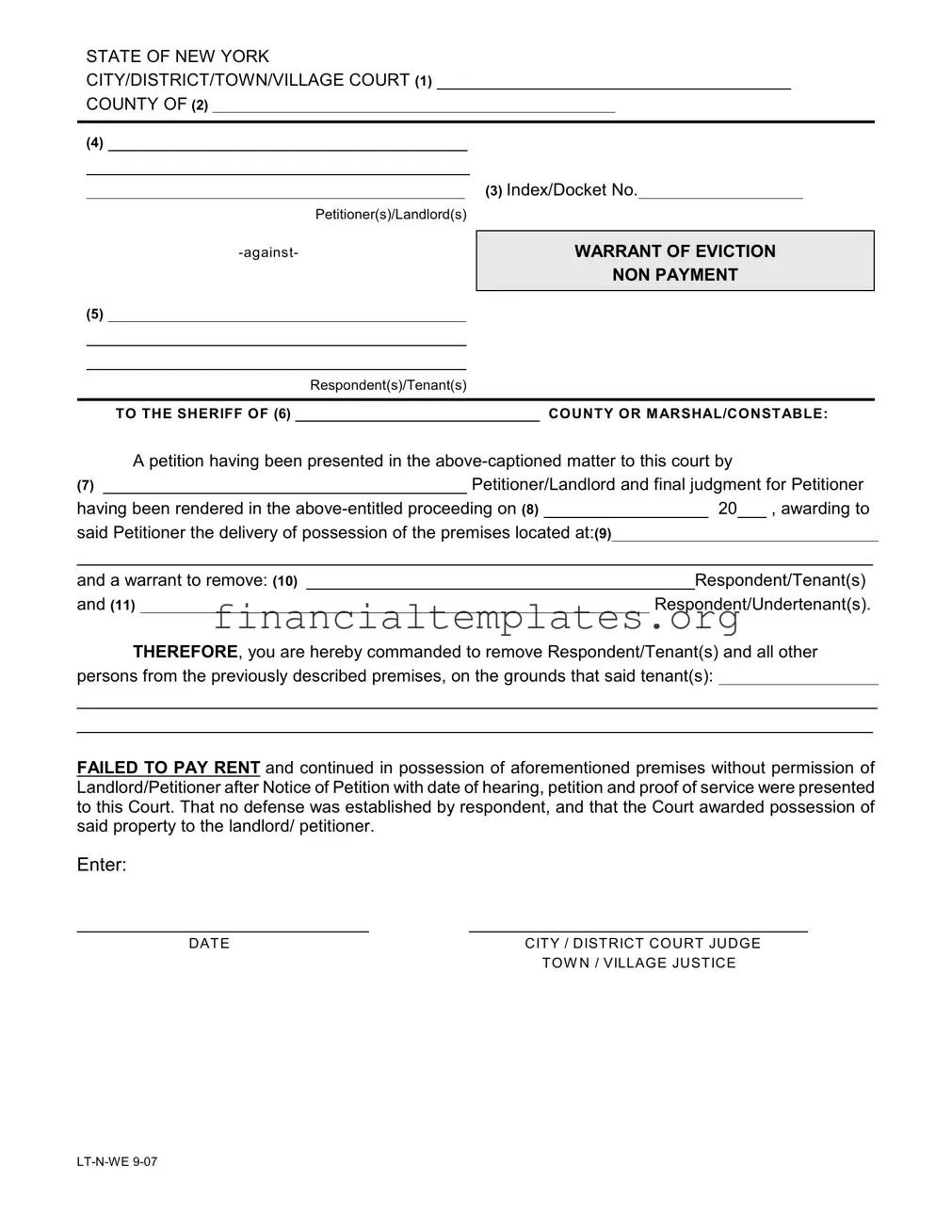The Notice to Quit for Nonpayment form is closely related to the Warrant of Eviction Non-Payment form. The key similarity is that both documents are initiated due to the tenant's failure to pay rent. While the Notice to Quit serves as a preliminary notice informing tenants of the landlord's intent to terminate the lease due to unpaid rent, the Warrant of Eviction is the final step, authorizing the removal of the tenant from the property. Both are integral steps in the legal process of eviction for nonpayment.
Summons and Complaint in a Nonpayment Proceeding mirror the Warrant of Eviction Non-Payment form in purpose but differ in process stage. This document officially starts the court process for eviction due to nonpayment, requiring the tenant to respond and defend their case. Similar to the warrant, it is based on the tenant's failure to pay rent but precedes the final eviction warrant, aiming to provide a legal platform for dispute resolution before eviction is authorized.
The Rent Demand Letter, although less formal, bears resemblance to the Warrant of Eviction Non-Payment form as it is a precursor in the eviction process. It formally requests the overdue rent from the tenant, often specifying a time frame for payment before legal action is pursued. This letter is a mandatory step before filing for eviction, linking it directly to the eventual issuance of an eviction warrant if payment is not received.
The Final Judgment of Eviction document is directly connected to the Warrant of Eviction Non-Payment form, as it represents the court's final decision to evict the tenant following a legal proceeding. It serves as the official court order that precedes the issuance of the eviction warrant, making it a crucial step in the legal process leading to the actual eviction. The judgment confirms the tenant's failure to pay rent and legally validates the landlord's claim to regain possession.
The Order to Show Cause is akin to the Warrant of Eviction Non-Payment form as it offers the tenant a final chance to contest the eviction before the warrant is issued. This document requests the tenant to appear in court and demonstrate why the proposed eviction should not proceed. While serving a different function, it is intertwined with the eviction process, focusing on ensuring fairness before finalizing the tenant's removal.
The Lease Agreement itself, though fundamentally a contract, is intrinsically linked to the Warrant of Eviction Non-Payment form since violations of this agreement, particularly non-payment of rent, trigger the eviction process. The terms set out in the lease are the basis upon which landlords can seek eviction through warrants, making the connection between document content and subsequent eviction actions clear.
The Property Entry Notice, while typically used for informing tenants of upcoming property inspections or maintenance, shares a procedural similarity with the eviction warrant in that it regulates the conditions under which a landlord may enter the rented premises. Unlike the eviction warrant, it is used under normal circumstances but becomes related when eviction processes question the legality of property access.
The Settlement Agreement in an Eviction Case, often resulting from court mediation, is another document related to the Eviction Warrant for Non-Payment. If both parties reach a settlement before the eviction warrant is executed, this agreement can halt the eviction process, providing a legal resolution that addresses the unpaid rent and potentially allows the tenant to remain on the premises under agreed conditions.
The Tenant's Answer to Complaint, a critical document in the eviction process, enables the tenant to officially respond to the claims made in the landlord's eviction filing, similar to the Summons and Complaint. While it doesn't directly correlate to the action of eviction like the warrant, it plays a significant role in the proceedings that either justify or nullify the need for an eviction warrant, based on the tenant's defense against the non-payment accusation.

